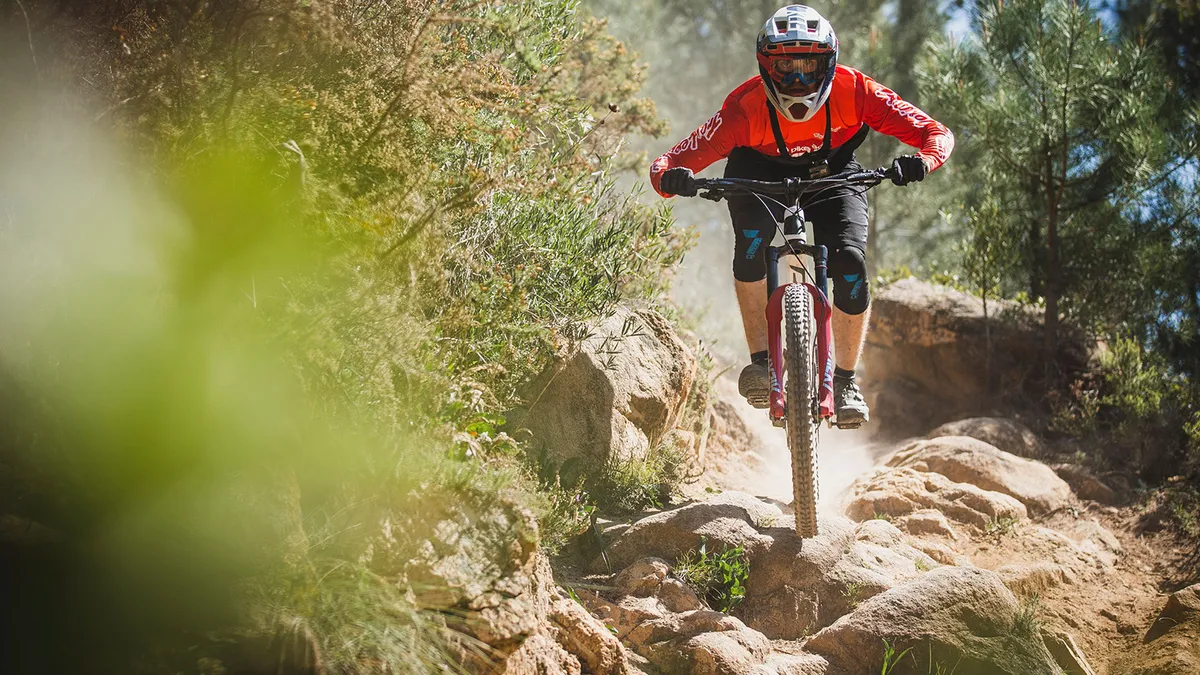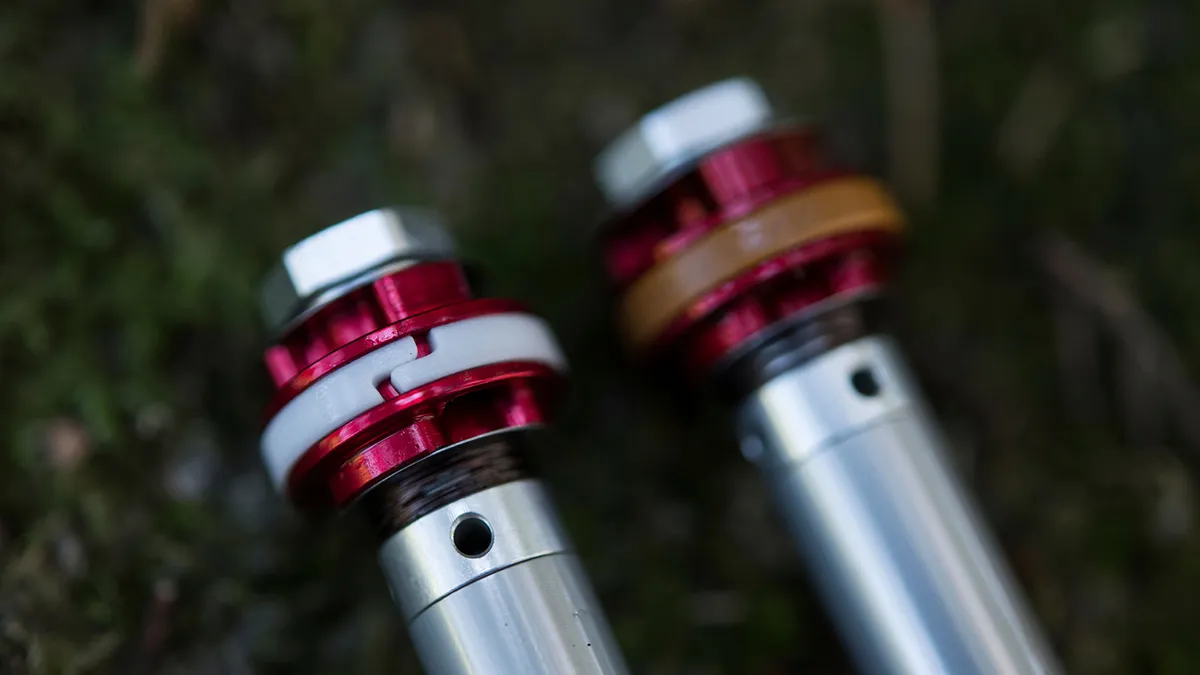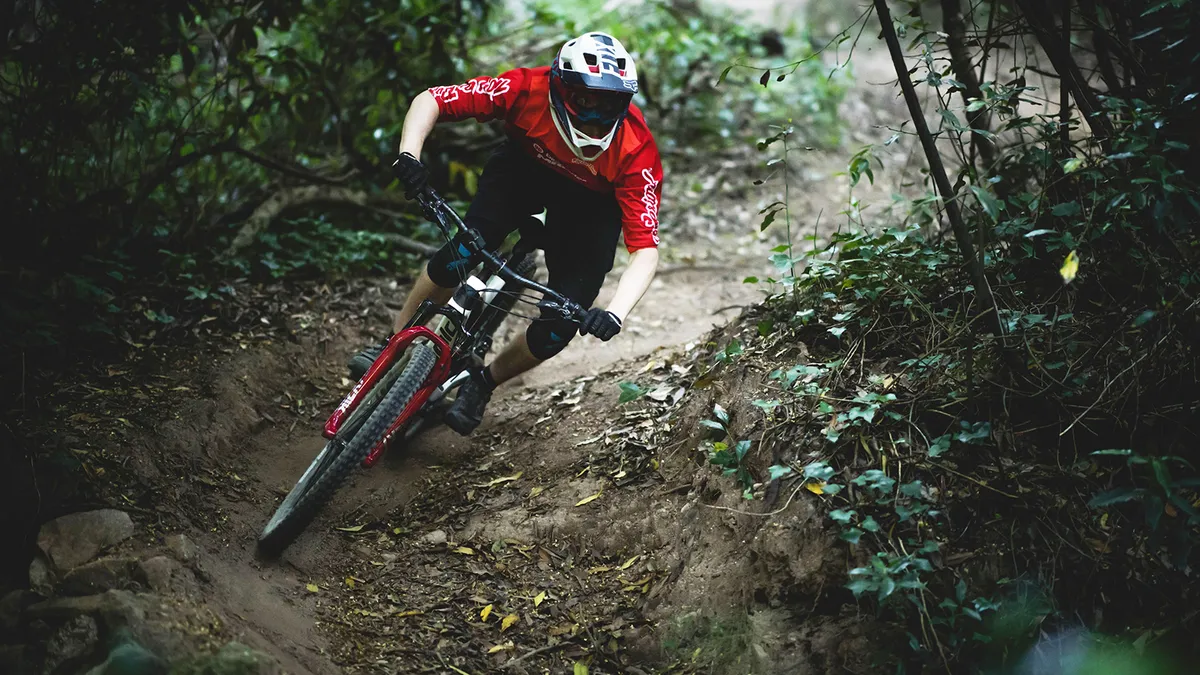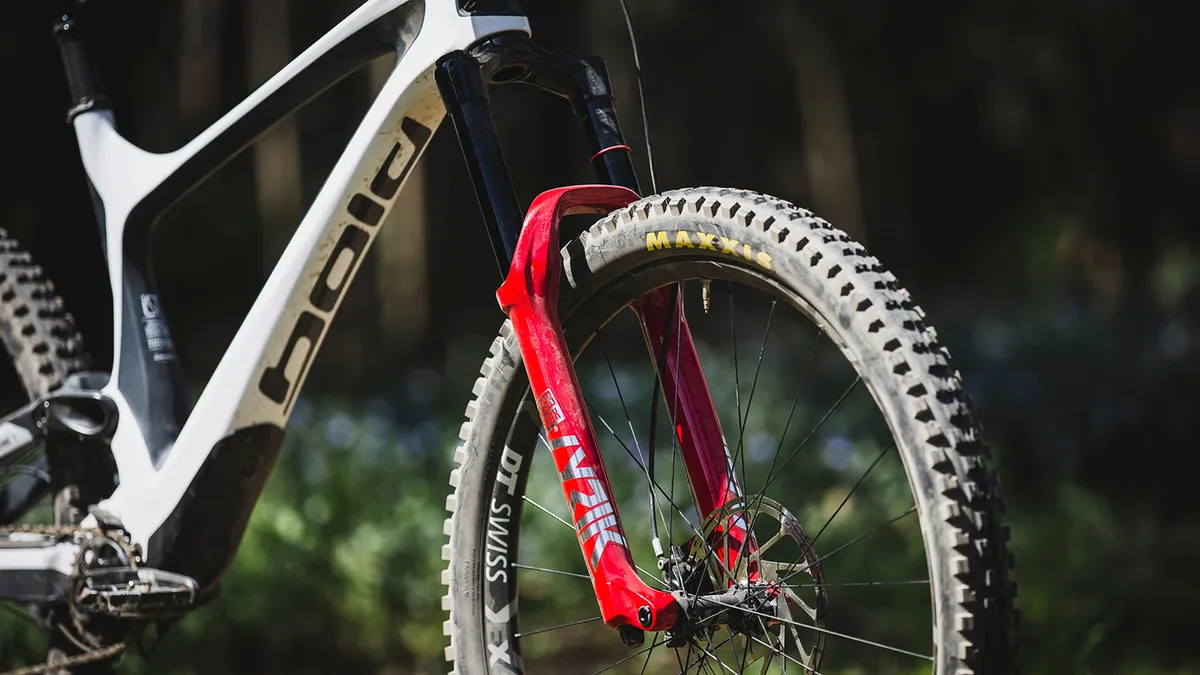Despite being only a few months into 2019, RockShox has released its 2020 product onto the market, which will be available to buy when you read this.
The Lyrik Ultimate is the flagship enduro fork, which shares several updates with its Pike, Boxxer and Sid siblings. This article explains in detail what these updates are. To summarise, the chassis and spring remain the same, while the main updates over the 2019 Lyrik RC2 are below.
- RockShox reveals 2020 forks and shocks
- The ultimate guide to mountain bike rear suspension systems
- Buyer's guide to RockShox suspension forks
Main updates to Lyrik Ultimate RC2 compared with 2019 model
- New SKF wiper seals, damping fluid and damper seal head are claimed to reduce friction (for the benefit of sensitivity)
- The Charger 2.1 damper gets a new wear band around the main damper piston, designed to stop oil flowing around the piston, thereby increasing rebound damping control at very low shaft speeds
- The high-speed compression damping has been re-tuned to be more forgiving. Fully open on the 2019 RC2 damper corresponds to two to three clicks from open on the new damper
- The low-speed adjuster needle has been reshaped to provide more low-speed support.

Overall, the changes between the 2019 and 2020 Lyrik RC2 forks are subtle, but noticeable in back-to-back tests. The Debonair spring introduced in MY2019 remains the key selling point of the fork, offering best in class off-the-top sensitivity and mid-stroke support.
This phrase has become a cliché simply because it’s how every manufacturer wants their air springs to perform, though it’s easier said than done. But in the case of the RockShox Debonair spring, it genuinely provides a softer initial stroke than any of its air-sprung rivals, while still holding the fork higher after sag.
After testing ten top enduro forks recently, only Fox’s 36 GRIP 2 came close, but the 2019 Lyrik still had the edge in terms of low-load traction and repeated impact comfort. The Fox’s damper was slightly more controlled in certain big hole scenarios, but the Lyrik has the overall edge in my opinion.

Given this, the 2020 Lyrik could hardly have been expected to be radically different. But when swapping from the old to the new and back again, certain differences come to the surface.
Most obviously, I was using more travel with the new fork. Both forks were set to 180mm, with 98psi (I weigh 86kg), no spacers and fully open compression damping. With the 180mm Lyrik, I rarely used full travel. This is not because the spring force ramps up harshly towards the end of the travel, but because it builds up earlier throughout the mid-end stroke, so you’re pushing through a firm spring force for longer.
For this reason, the 2019 Lyrik needs to be set up with less high-speed compression damping than its predecessor (which didn’t have the DebonAir spring) to allow access to the end of the stroke.
I usually ran the 2019 fork fully open on high-speed compression damping, so it’s nice to have the option to go lighter still on the 2020 fork. Despite this, I would be surprised if anyone finds the new fork too lightly damped at the other end of the scale.

The 2020 fork felt comfier on big landings, braking bumps and rocks, and used measurably more travel. Crucially, it was only after riding the fork that I learned that the high-speed damping was different, so I can say with some confidence that this was genuinely noticeable and not just a placebo.
Despite running the high- and low-speed compression fully open, I never felt the fork lacking support. The spring holds it up nicely, especially under sustained braking, so less compression damping is required. The result is a supple, comfortable and speed-sustaining fork relative to, for example, the Fox 36 GRIP2, which is noticeably firmer-damped on high-speed hits.
Thanks to the lighter high-speed damping — and presumably the reduced friction too — I consistently got less hand pain with the 2020 fork in back-to-back runs.
I can’t say I noticed a significant difference in rebound feel thanks to that new piston wear band. The rebound felt slightly slower on the new fork at a given setting, but after setting it one click more open the two forks felt very similar.
Overall, the difference between the 2019 and 2020 Lyrik is subtle but welcome, especially if you value comfort most.
The best news is that if you have an older Lyrik and want more sensitivity, the seals and damping oil can be cheaply upgraded when your fork is serviced. If you want a softer high-speed feel, the Charger 2.1 damper is available as an upgrade for Lyrik and Yari, priced at £325 / €365 / $330.
The 2019 Lyrik RC2 was, in my opinion, already the best enduro fork on the market, and the 2020 version is better still. What the other manufacturers have in store for model-year 2020 is yet to be seen.

